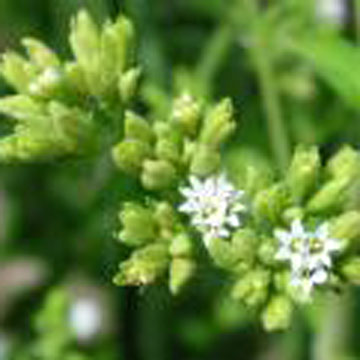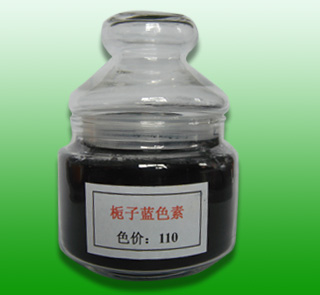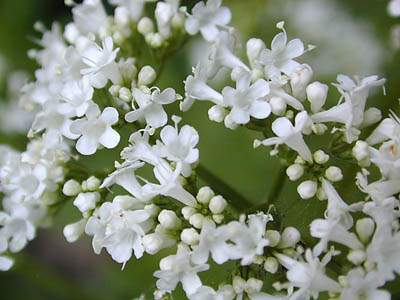
| Product Category |
| Herbal Extract |
| Natural Food Color |
| Nutrition Additive |

Products Search
Herbal Extract
 Stevia sugar features high sweetness and low calorie and its sweetness is 200-350 times of that of cane sugar but its calorie is only 1/300 of that of cane sugar.  Gardenia Blue, a natural food pigment, is got from the gardenia (Gardenia jasminoides ELLIS) fruit of madder family by biological fermentation. |
Valerian ExtractValerian Extract Detail:Origin & Technology: Valerian grows wild all over Europe. But most valerian used for medicinal extracts is cultivated. Valerian is a perennial that reaches about 5 feet. Its medicinal roots consist of long, cylindrical fibers issuing from its rhizome. Its stem is erect, grooved, and hollow. Valerian leaves are fernlike. Tiny flowers - white, pink, or lavender- develop in umbrella-like clusters and bloom from late spring through summer. When dried valerian roots have an unpleasant odor, like that of ''dirty socks''. Appearance: Green Brown fine powder Specification: Valerianic Acid (HPLC) 0.6%,0.8% Functions: Remedies For: Insomnia Blood pressure Anticonvulsant - treatment of epilepsy Clinical studies have shown that people taking valerian had shown significantly improved sleep quality without morning grogginess. Some researchers have compared valerian to benzodiazepines such as Valium. However, valerian is a much milder and safer sedative. Unlike valium, valerian is not addictive or does not promote dependency. Valerian''s sedative effect is not significantly exaggerated by alcohol and barbiturates unlike valium. Recommended dosage of valerian does not cause morning grogginess. Valerian is not linked to any birth defects, unlike valium. Blood Pressure: Animal studies have shown that valerian reduces blood pressure. Valerian is shown to have some anti-tumor effects similar to that of nitrogen mustard. It may play a role in the treatment of cancer. Valerian is shown exhibit anticonvulsant effects that may help in the treatment of epilepsy. Chemical Composition: Valerian root contains many different constituents, including essential oils that appear to contribute to the sedating properties of the herb. Central nervous system sedation is regulated by receptors in the brain known as GABA-A receptors. Valerian may weakly bind to these receptors to exert a sedating effect. Dose: Many people take 300-500 mg of valerian root herbal extract in capsules or tablets one hour before bedtime for insomnia. As an alcohol-based tincture, 5 ml can be taken before bedtime. Combination products with lemon balm, hops, passion flower and scullcap can also be used. Children 6 - 12 yrs old respond to half of the adult dosage. Secure Quality: Valerian has a long history of exceptional safety, which has been confirmed by clinical studies. In 1995 a woman in Utah attempted suicide by taking about twenty times the recommended dose. She was discharged from the hospital the next day, undamaged. While taking valerian, caution should be used when driving or operating machinery. Unlike Valium- like drugs, valerian is not associated with dependence or addiction. While valerian is not synergistic with alcohol, it is best to be cautious in this regard. Sedatives should never be combined with alcohol. Although no cases of drug interactions have been reported, animal studies have demonstrated that valerian can potentiate the effect of phenobarbital and benzodiazepines. It can also aid in the withdrawal of benzodiazepine tranquilizers and sleeping pills, but this should only be done under a doctor''s supervision. There are no known contraindications to using valerian during pregnancy or lactation. Valerian should not be used nightly for longer than six months. Poisoning may result if large amount of the tea are taken for more than 2 to 3 weeks. Do not boil the root. Consuming large amounts of valerian may cause headache, giddiness, blurred vision, restlessness, nausea. And morning grogginess. FDA lists valerian as generally safe. Use only in consultation with a doctor if you are using valerian for therapeutic purposes. If you experience any side effects, stop the use immediately. |
Contact us
Xiamen JieJing Biology Technology Co.,Ltd.Tel : (86)592 8238993 Fax: (86)592 5133506
Email : service@csstdc.com
Herbal Extract Products Update
Product Name: Hibiscus P.E. Plant Origin: Hibiscus sabdariffa Specification: Extract Ratio: 5:1 Hibiscus grows in tropical areas throughout the world, and has been used not just as an ornament, but also medicinally for centuries. The part of this plant used medicinally is the flower. The Hibiscus flower is made into a tea in numerous cultures throughout the world. Hibiscus has a mild flavor and has many culinary uses. Action: 1.Hibiscus was used by the Chinese to treat dandruff and stimulate hair growth...
Tel : (86)592 8238993 Fax: (86)592 5133506
Email : service@csstdc.com
Copyright © 2006-2013 Xiamen JieJing Biology Technology Co.,Ltd.
